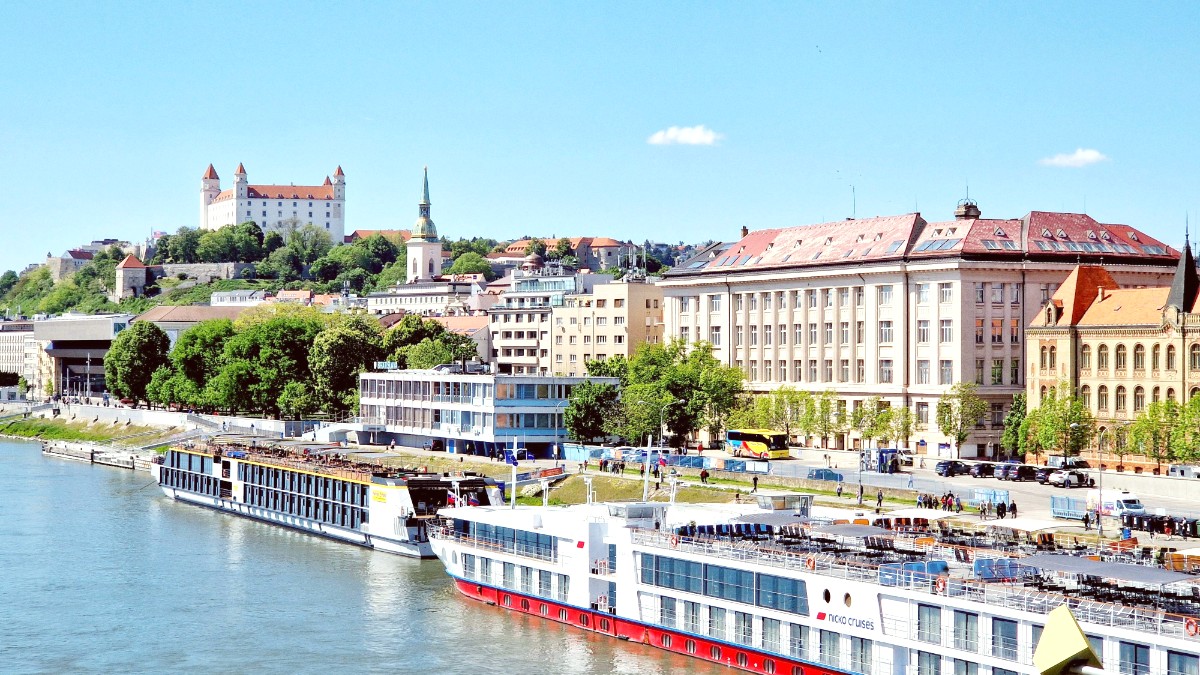
Slovakia
Bratislava occupies land in southwestern Slovakia, on the banks of the Danube River. The Little Carpathians, a mountain range, begin within the city's boundaries. This unique position gives Bratislava a mix of urban landscape and natural beauty. The Danube River forms a natural border with Austria to the west and south, connecting Bratislava directly to Vienna and Budapest by water. The city’s low elevation, generally around 130 meters (426 feet) above sea level, means a continental climate. This geography influences its weather patterns, from warm summers to cold, snowy winters. The city’s position at the crossroads of Central Europe shaped its historical importance and continues to inform its cultural exchanges.
The urban area itself includes the historic Old Town on the left bank of the Danube, the expansive residential area of Petržalka on the right bank, and various other districts. This geographical layout influences transport, with bridges spanning the Danube and a network of public transport lines connecting different parts of the city.
The Carpathian foothills offer natural retreats and viewpoints, providing a green backdrop to the cityscape. Travelers enjoy these accessible natural spaces for outdoor activities, even within city limits.
Bratislava's history stretches back thousands of years. Celtic and Roman settlements existed here before Slavic tribes arrived. The city, then known as Pressburg or Pozsony, rose to prominence in the medieval period. It became an useful center in the Kingdom of Hungary. After the Ottoman Empire conquered Buda in 1536, Pressburg became the capital of the Kingdom of Hungary and its coronation city.
From 1563 to 1830, eleven Hungarian kings and eight queens were crowned in St. Martin's Cathedral. This era left a lasting mark on the Old Town's architecture and character. In the 18th century, under Empress Maria Theresa, Bratislava saw a period of prosperity and artistic growth. Many palaces and residences from this Baroque era stand today. The 19th century brought national awakenings for Slovaks, Hungarians, and Austrians. The city became a battleground of political and cultural ideas.
Pressburg named capital of the Kingdom of Hungary.
Coronation city for Hungarian monarchs.
Baroque era prosperity under Maria Theresa.
Became Slovak administrative center within Czechoslovakia.
Capital of independent Slovak Republic.
After World War I, in 1918, Czechoslovakia formed, and Pressburg, renamed Bratislava, became a Slovak administrative center. This marked a shift in its identity, moving from a multi-ethnic imperial city to the capital of the Slovak nation within Czechoslovakia.
During the communist era (1948-1989), Bratislava experienced rapid industrialization and urban development. Large socialist-era housing blocks appeared, specifically across the Danube in Petržalka. The city's population grew rapidly.
The Velvet Revolution in 1989 brought an end to communist rule. In 1993, with the dissolution of Czechoslovakia, Bratislava became the capital of the independent Slovak Republic. This new status brought renewed focus on its unique heritage and a drive for modernization.
Today, the city reflects these layers of history, offering insights into Central European development across different empires and political systems.
Bratislava today presents a captivating mix. The meticulously restored Old Town charms visitors with its pedestrian-friendly streets, historic squares, and numerous cafes. Bratislava Castle, perched above the Danube, offers views of the city and its surroundings.
The city is home to several museums and galleries, showing Slovak art and history. Beyond the historical core, you find modern shopping centers, lively nightlife, and green spaces.
The city’s atmosphere is relaxed and welcoming, blending smaller city charm with capital amenities.
Lower cost of living compared to many Western European capitals, offering good value.
Excellent rail and bus connections to Vienna, Budapest, and Prague.
Bratislava is also a culinary destination, with traditional Slovak dishes alongside international cuisine. The local wine region, the Little Carpathians, provides opportunities for tasting tours just outside the city.
Euro (€)
Slovak (English widely spoken in tourist areas)
For Slovakia, +421.
Slovakia is part of the Schengen Area, simplifying entry for many travelers.
Citizens of US, Canada, UK, Australia, NZ, Japan, South Korea, EU/EEA do not need a visa for stays up to 90 days for tourism.
Visa-exempt non-EU nationals will need ETIAS authorization for Schengen Area travel. This is a pre-travel authorization.